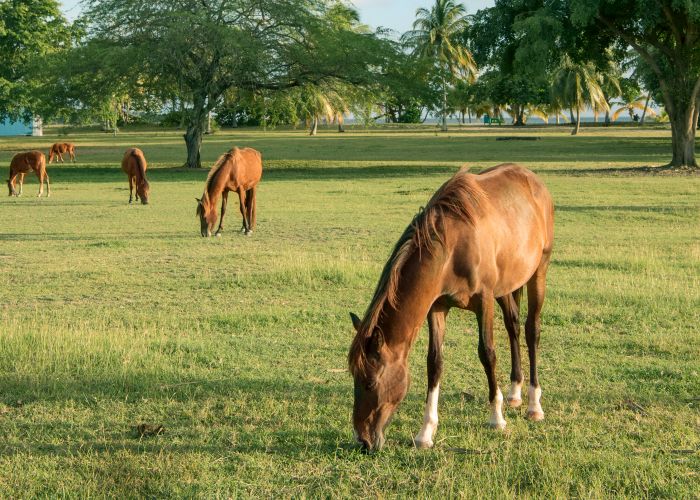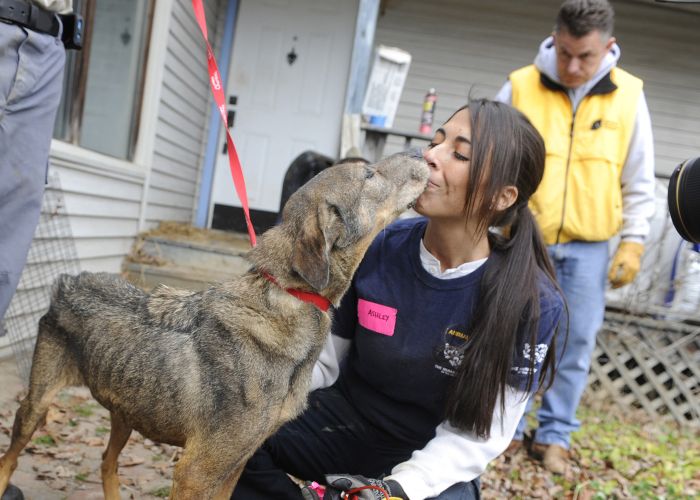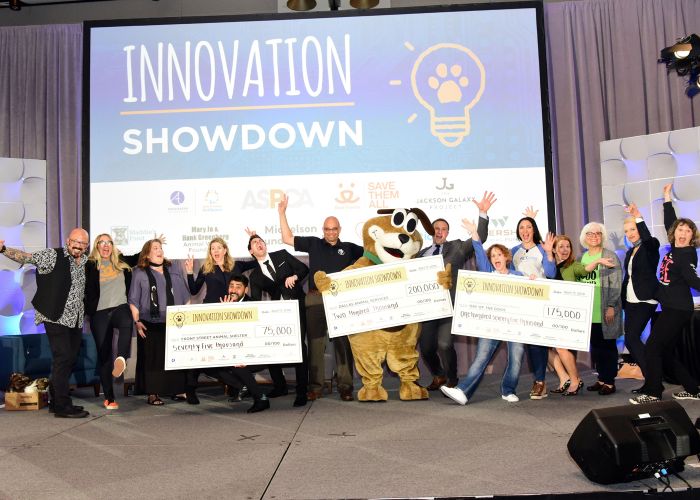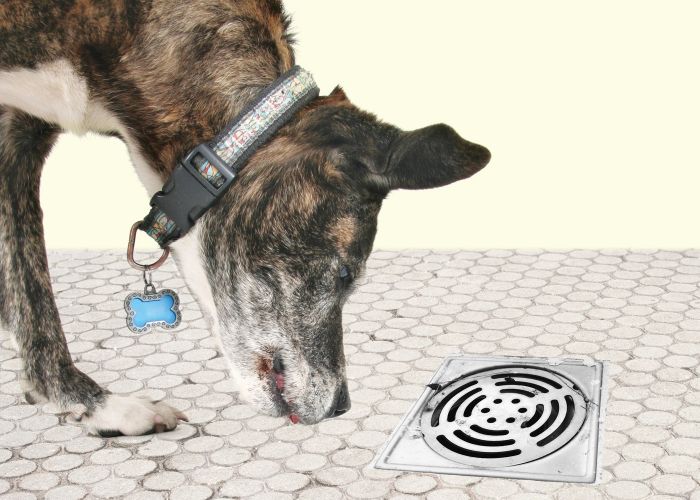Acts of Providence
Through the Pets for Life approach, a Rhode Island shelter brings warmth to the streets
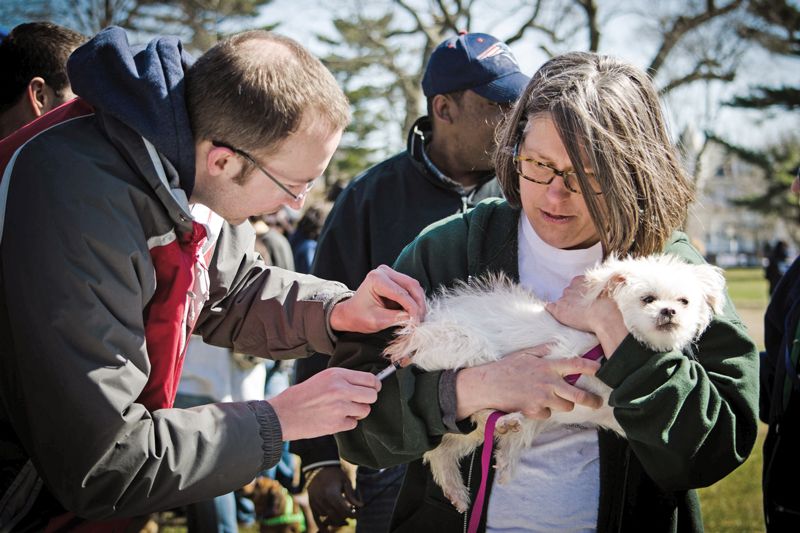
It was clear to executive director Carmine DiCenso that the Providence Animal Rescue League (PARL) had lost its way.
When DiCenso came on as head of the shelter in 2011, the organization had turned over seven previous executive directors in about as many years. Most of the line staff had stayed pretty much the same throughout that chaotic period, and there were “some long-term, fairly headstrong staff who were kind of running the place,” DiCenso says. The high level of turnover at the top had created trust issues, and many long-timers had been doing their jobs as they felt they should be done, without much guidance or structure from above.
DiCenso had started making some small changes—talking about open adoptions and doing some community outreach—when he happened upon The HSUS Pets for Life Community Outreach Toolkit online.
It was love at first read.
“Not only did we love the idea of going to and reaching people who wouldn’t normally come to our shelter, but we loved the whole idea of it: that we’re going to be open-minded and try to help people,” he says. He started studying the toolkit, and then when an opportunity to apply for the Pets for Life mentorship program came up, the organization jumped on it—and got it.
PARL was one of the first mentorship groups, says Kenny Lamberti, Pets for Life program manager. DiCenso and a few members of his team came down to Philadelphia, spending a day in the classroom learning best practices and methodology, and then going out for a second day to do fieldwork in Philly.
That second day is always key, Lamberti says, because “even the most progressive people are nervous about going into these ‘tough’ neighborhoods”—until they see how welcomed the longtime PFL team is in the areas where it’s worked to establish a trusted presence.
Yet when DiCenso and his team got back to Providence and started pushing the new approach to the organization’s work, they initially got the freeze-out.
The chill came from multiple fronts: As DiCenso and team started hitting the city streets in late 2012, the New England winter was just setting in, and sensible Yankees were sheltering indoors rather than sitting on front stoops and hanging out in the neighborhood, where they could be more easily approached by friendly strangers.
But the cold front wasn’t just the weather. Out on the chilly streets, the doors the PARL team did knock on—to offer their services and help—often didn’t stay open long.
“People were suspicious,” DiCenso says, his voice amused as he recalls the times when “we’d come up to a house and see a ‘Beware of Dog’ sign or there’d be a litter bucket outside and we’d ask, ‘Oh, do you have any pets?’ and get a ‘No.’”
Providence, DiCenso says, is a bit of a miniature Boston—“really small and accessible, but really segmented like Boston, with a small financial district, a segment like the north end of Boston with a lot of Italian bakeries and restaurants, art culture, colleges like Brown and Johnson and Wales, then a lot of poor areas and very urban settings, public housing areas. South Providence is the main ZIP codes we’re working in, our target area.”
And the folks in those neighborhoods hadn’t often gotten visits from people offering help.
Break on Through
As the weather warmed and PARL staff started to spend more time in the neighborhoods, people started to open up and recognize them as familiar faces. PARL staff drove people to vet appointments, held community outreach events, helped with pet food and medications and arranged for low-cost spay/neuter surgeries.
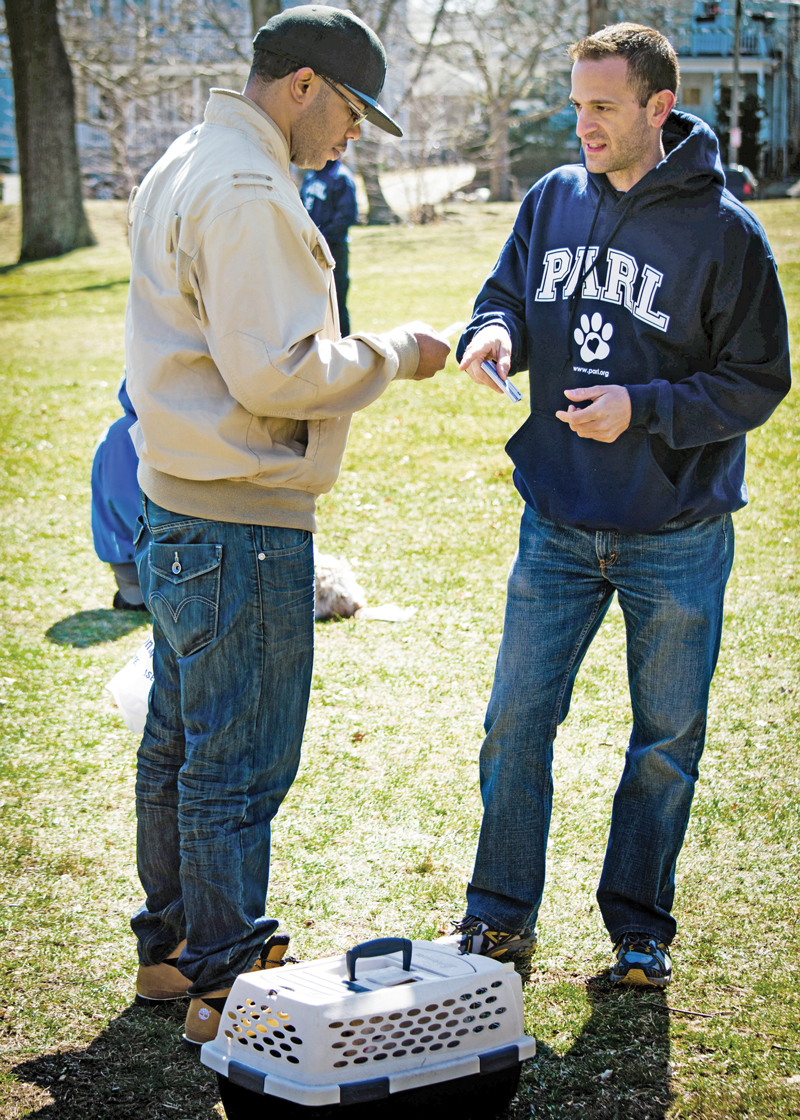
These days, the reception has changed. “When we drive the van through the community now, we have people calling out to us, ‘Hey, when you doing the vaccine clinic again?’” DiCenso says.
Interestingly, the greatest difficulties PARL had in implementing the PFL approach were in persuading its own staff. They’d long been operating with their own internal adoption guidelines, creating inconsistencies in adoption approvals and an approach to people that DiCenso thought wasn’t appropriately friendly.
“He had to go through a real cultural shift—it was a culture of negativity before,” says Lamberti, who’s known DiCenso since they both worked in Boston in the late ’90s.
DiCenso wanted to see the organization treating people with the same care and respect they had when caring for animals. After all, he points out, the shelter is providing an advertised service, and “if I go to a bank to deposit money, they don’t yell at me and look down at me because I’m doing it.”
With PARL staff starting to implement the community outreach elements of PFL, DiCenso realized things had to change within the shelter’s culture. “That was kind of the kick-in-the-butt moment, where we realized if we’re going to be out there promoting this program and working with the community, and then people are coming to our shelter and not having that same experience, that’s a problem,” DiCenso says.
“I think he was working on creating that shift before PFL, and then PFL just helped put some extra nitro into his efforts,” Lamberti says.
But it was a long process—the shelter ended up turning over almost its whole staff, “most by their own choice, though there were a few we did have to ask to go,” DiCenso says. “We had honest conversations and sort of said, ‘If you don’t agree with [our new approach], it’s fine, but you can’t work here and do it the old way.’” He ended up hiring a number of new people who didn’t have a whole lot of animal experience, but were terrific with people.
And the difficult conversations continue to this day. In fact, DiCenso thinks it’s critical that they do: Finding the line between neglect and lack of resources can be a challenge. Deciding who gets a pet can feel like a huge responsibility.
But the staff now regularly talks through adoption applications that in the past might have resulted in a flat denial. It isn’t always comfortable—but it’s working.
The proof is in the petting: PARL provided some 400 subsidized spay/neuters in 2012; in 2014, it provided 1,254, most to people it would never before have reached. When the organization’s van goes into the community, it gets waves, smiles and a much warmer welcome.
The friendly, appreciative faces match the ones visitors will see when they go to PARL, a reflection of the lines codified in the organization’s written philosophy: “We will only help animals by working proactively and compassionately with people.”


